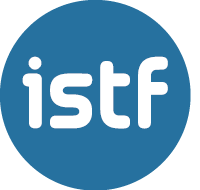Influence of neuromyths in the educational environment
Educational neuromyths are simplifications, misunderstandings, or misinterpretations of scientific findings about the brain that have been used to describe specific learning and teaching processes. These misconceptions are often based on intuitive or naive ideas about how the brain works and are often the product of distortions inadvertently fueled by people’s confirmation bias.
ISTF, January 20, 2023

The term was first coined by neurosurgeon Alan Crockard in the 1980s to describe unscientific ideas about the brain in medical culture. When used in the educational field, these unfounded beliefs lead teachers to carry out practices that are not scientifically proven, which can be counterproductive for the teaching-learning process.
Several studies have revealed a high prevalence of educational neuromyths among teachers across different countries. Taking into account the results of said investigations, a team from the Universidad Autónoma de Madrid and the International Science Teaching Foundation raised two fundamental questions in their joint study “Neuromyths in the educational environment”:
- What are the most widespread neuromyths among teachers in Catalan schools?
- Can a training course reduce these misconceptions among teachers?
The results of the study were published in the journal Trends in Neuroscience and Education in November 2022.
Neuromyths in the educational environment
807 Primary and Secondary teachers from 203 educational centers in Catalonia took part in this research led by neurobiologist Héctor Ruiz Martín, director of the ISTF and specialist in cognitive psychology of learning.
The research revealed which neuromyths are most prevalent in a sample of Catalan teachers and concludes that training in-service educational practitioners in neuroscience matters improves their ability to discern distorted information about how we learn.
After completing the first survey, teachers participated in a 15-hour online course on neuroscience, and took the same survey on neuromyths again, shortly after the course and also after three months. The results show that, once the teachers completed their training, the number of correct answers increased. However, when the test was repeated months later, some beliefs reappeared, but not at the pre-training test levels.
Intuitive ideas
Most neuromyths are based on intuitive, common sense ideas. This gives them a certain flair of plausibility and makes them hard to eradicate, despite the scientific evidence to the contrary. In this case, the scientific information causes a cognitive dissonance that can lead teachers to reject and disregard such information, and this is an example of a psychological phenomenon known as confirmation bias.
The study warns about the presence of many misconceptions about how the brain works, given that the psychology and neuroscience of learning have long been progressing outside the activity of the educational community. In this sense, Héctor Ruiz Martín also points out that years of teaching experience do not protect teachers against neuromyths.
Neuromyths
The four neuromyths listed by the OECD with the highest prevalence among teachers according to this study were:
- “Environments that are rich in stimuli improve the brains of preschool children.” (90.0% incorrect answers);
- “Individuals learn better when they receive information in their preferred learning style (auditory, visual, kinesthetic…).” (82.8%);
- “Short bouts of coordination exercises can improve integration of left and right hemispheric brain function.” (82.7%);
- “Exercises that rehearse coordination of motor-perception skills can improve literacy skills.” (82.4%).
Other misconceptions not identified by the OECD such as “children learn to read more effectively if they engage in perceptual motor activities” also had a very high prevalence.
Neuromyths such as “learning problems associated with developmental differences in brain function cannot be remediated by education,” or “children must acquire their native language before a second language is learned”, or ” there are critical periods in childhood after which certain things can no longer be learned” were detected in most cases.
There is also room for doubt among teachers in the area of neuromyths precisely because they sound so plausible. The neuromyth that received the most “do not know” responses was “it has been scientifically proven that fatty acid supplements (omega-3 and omega-6) have a positive effect on academic achievement”: 49.3% of teachers claimed not to know the correct answer.
AUTHOR
The ISTF team












Leave a Reply